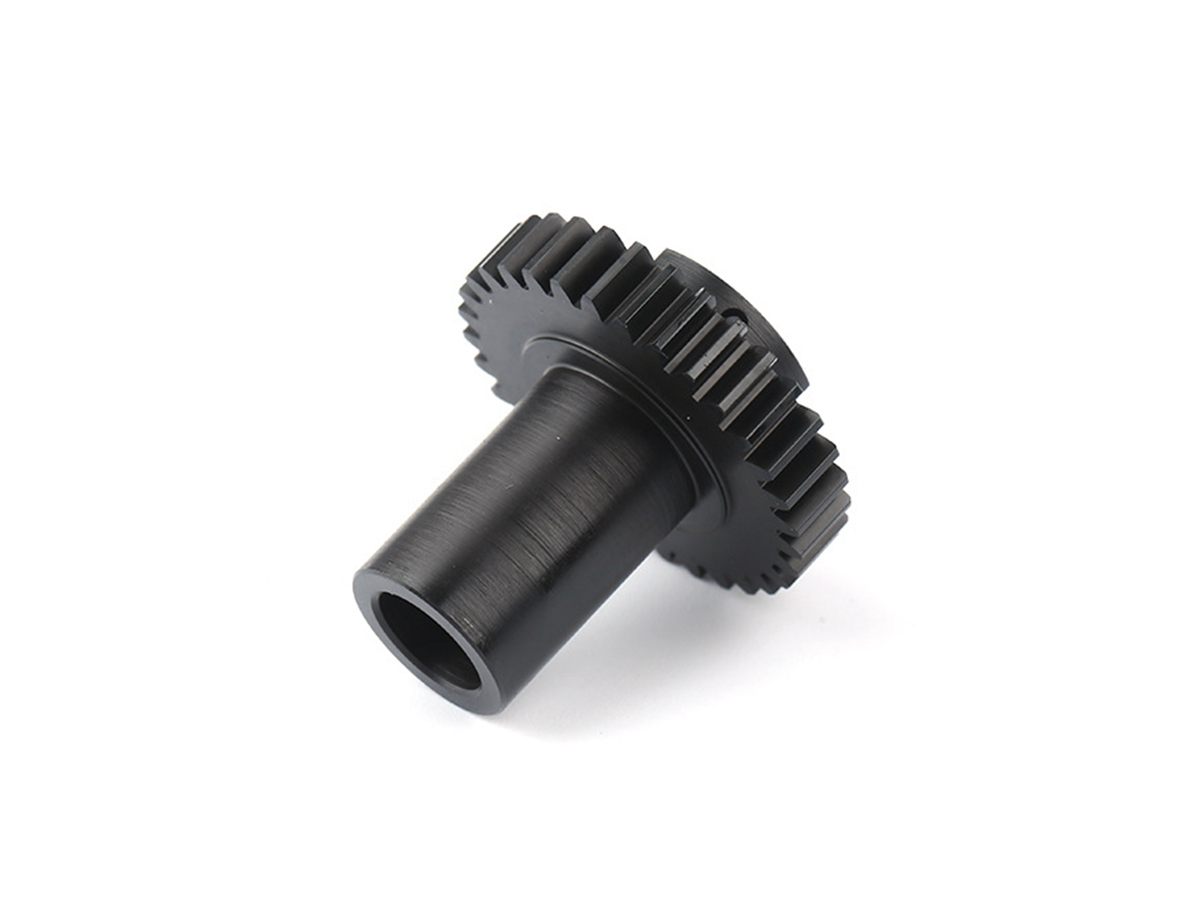Plastic Low-Volume CNC Machining for Robotics Prototypes and Custom Solutions
Introduction
Plastic low-volume CNC machining offers an efficient and cost-effective solution for producing high-precision robotics components and custom solutions. Materials like ABS, Nylon, and POM are often used in the robotics industry due to their lightweight nature, durability, and ease of machinability. Low-volume CNC machining of plastic parts allows robotics manufacturers to produce custom prototypes and small-batch components with fast turnaround times and high accuracy. Whether it's for testing robotic prototypes or creating custom mechanical parts, Plastic CNC Machining provides the flexibility needed for innovation in robotics.
This process is particularly useful for rapid prototyping, where manufacturers can quickly test different designs and adjust before moving to full-scale production. Low-Volume CNC Machining enables the creation of custom robotic solutions in small quantities while maintaining precision and minimizing waste, making it ideal for robotics development and innovation.
Plastic Material Properties
Material Performance Comparison Table
Plastic Material | Tensile Strength (MPa) | Impact Strength (kJ/m²) | Hardness (Shore D) | Density (g/cm³) | Applications | Advantages |
|---|---|---|---|---|---|---|
40–60 | 40–50 | 95–100 | 1.04 | Robotics housings, enclosures, prototypes | Good impact resistance, cost-effective | |
80–90 | 40–60 | 85–90 | 1.14 | Gears, bushings, structural parts | High wear resistance, low friction | |
70–90 | 50–60 | 90–95 | 1.41 | Robotic arms, precision parts | Excellent dimensional stability, high mechanical strength | |
60–70 | 50–70 | 87–92 | 1.20 | Transparent robotic covers, housings | High impact strength, optical clarity |
Selecting the Right Plastic Material for Robotics CNC Machining
Choosing the right plastic material for CNC machining depends on the requirements for strength, wear resistance, impact resistance, and ease of machinability:
ABS: Ideal for creating lightweight enclosures and prototypes for robotics, offering good impact resistance and ease of machinability. ABS is a cost-effective option for non-structural components.
Nylon (PA): Best for parts that require high wear resistance and low friction, making it perfect for gears, bushings, and moving parts within robotic systems.
Acetal (POM): Recommended for precision mechanical parts such as robotic arms, gears, and bushings, offering excellent dimensional stability and mechanical strength.
Polycarbonate (PC): Suitable for transparent robotic covers or housings where high impact strength and optical clarity are needed, commonly used in both external and internal parts of robotics.
CNC Machining Processes for Plastic Robotics Parts
CNC Process Comparison Table
CNC Machining Process | Accuracy (mm) | Surface Finish (Ra µm) | Typical Uses | Advantages |
|---|---|---|---|---|
±0.005 | 0.4–1.6 | Robotics housings, complex shapes | Versatile, high precision for intricate designs | |
±0.005 | 0.4–1.2 | Rotational components, shafts | Consistent, precise rotational parts | |
±0.01 | 0.8–3.2 | Holes, threaded components | Efficient, fast hole-making | |
±0.003 | 0.2–1.0 | Complex robotic parts | High precision, capability for complex geometries |
CNC Process Selection Strategy
Choosing the appropriate CNC machining process for plastic robotics parts is critical to meeting part complexity, tolerance requirements, and production speed:
CNC Milling: Ideal for machining intricate designs and complex geometries in plastic, such as robotic housings and detailed structural components, ensuring high precision (±0.005 mm).
CNC Turning: Suitable for creating rotational components like shafts, tubes, and bearings for robotic systems, offering high consistency and precise surface finishes (Ra ≤1.0 µm).
CNC Drilling: Perfect for creating accurate holes and threads in plastic components, ensuring fast and efficient hole-making with high accuracy (±0.01 mm).
Multi-Axis Machining: Best for producing complex robotic parts with multi-directional features, offering superior precision (±0.003 mm) and reducing production cycles.
Surface Treatments for Plastic Parts
Surface Treatment Comparison Table
Treatment Method | Surface Roughness (Ra µm) | Corrosion Resistance | Max Temp (°C) | Applications | Key Features |
|---|---|---|---|---|---|
≤0.8 | Good | 300 | Connectors, functional parts | Enhanced surface durability, corrosion protection | |
≤1.0 | Excellent | 400 | Robot frames, protective covers | Corrosion resistance, improved hardness | |
≤1.0 | Excellent | 150 | Robotics casings, aesthetic parts | Fast curing, scratch resistance, aesthetic finish | |
≤2.0 | Excellent | 200 | Structural components, robotic housing | Durable, highly resistant finish |
Surface Treatment Selection Strategy
Surface treatments enhance the mechanical, aesthetic, and environmental properties of plastic parts used in robotics:
Electroplating: Ideal for enhancing the durability and appearance of functional parts, providing corrosion protection while ensuring a smooth surface.
Anodizing: Recommended for robotic parts requiring enhanced corrosion resistance and improved hardness, making it suitable for robot frames and protective covers.
UV Coating: Perfect for producing high-quality finishes on plastic robotics casings, providing excellent scratch resistance and UV protection, especially for exterior parts.
Powder Coating: Best for parts requiring a durable, highly resistant finish, such as robotic housing, offering both aesthetics and protection against harsh environments.
Typical Plastic Rapid Prototyping Methods
Effective prototyping methods for plastic robotics components include:
CNC Machining Prototyping: Provides fast and precise prototyping for plastic parts, including small batches of robotics components.
Plastic 3D Printing: Ideal for creating complex geometries and custom plastic parts with quick turnaround.
Rapid Molding Prototyping: Cost-effective for producing moderate complexity plastic parts quickly before mass production.
Quality Assurance Procedures
Dimensional Inspection: ±0.002 mm accuracy (ISO 10360-2).
Material Verification: ASTM D638 standards for plastics.
Surface Finish Assessment: ISO 4287.
Mechanical Testing: ASTM D256 for impact strength.
Visual Inspection: ISO 2768 standards.
ISO 9001 Quality Management System: Ensuring consistent quality and performance.
Key Applications
Robotic Arms: High-precision joints, lightweight frames.
Automated Assembly Lines: Components for pick-and-place systems.
Custom Robotic Solutions: Specialized parts for automation equipment.
Robotics Sensors: Protective casings, sensor mounts.
Related FAQs:
Why is low-volume CNC machining ideal for plastic robotics components?
What plastic materials are best suited for robotics applications?
How does low-volume CNC machining support rapid prototyping of robotics components?
What surface treatments are recommended for plastic robotics parts?
How does low-volume CNC machining enhance custom robotic solutions?

